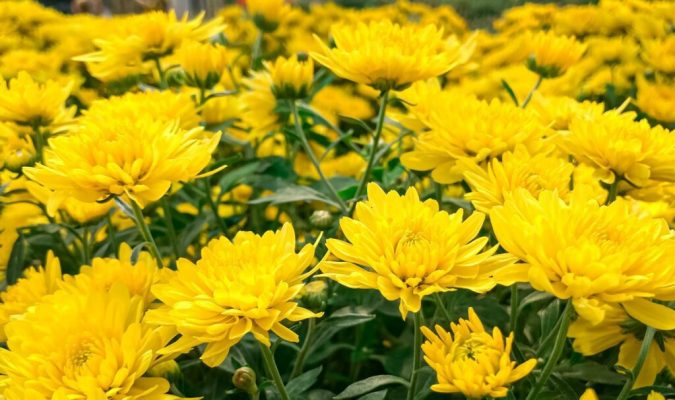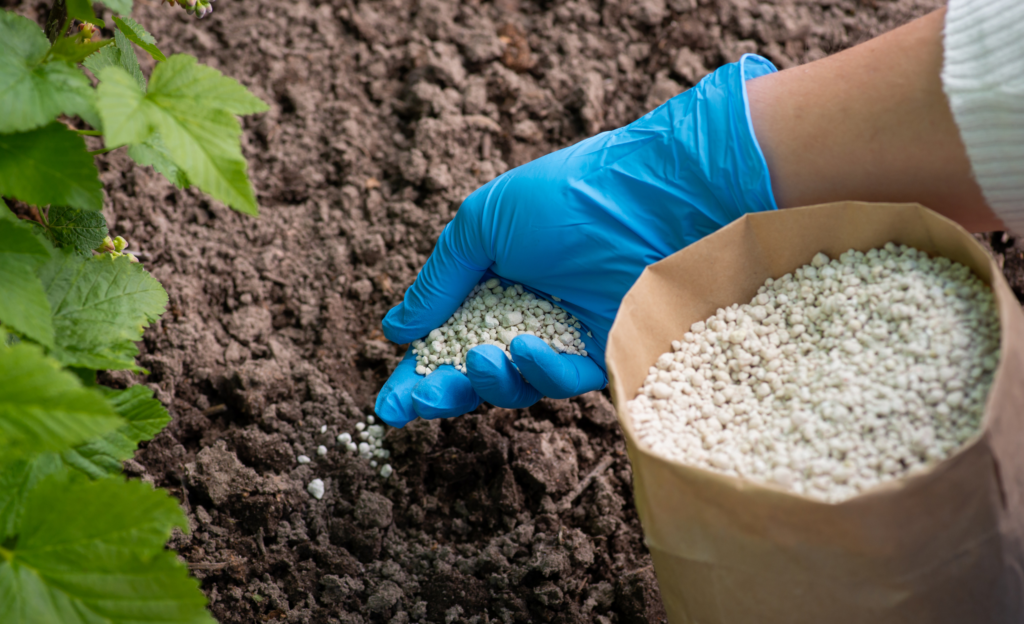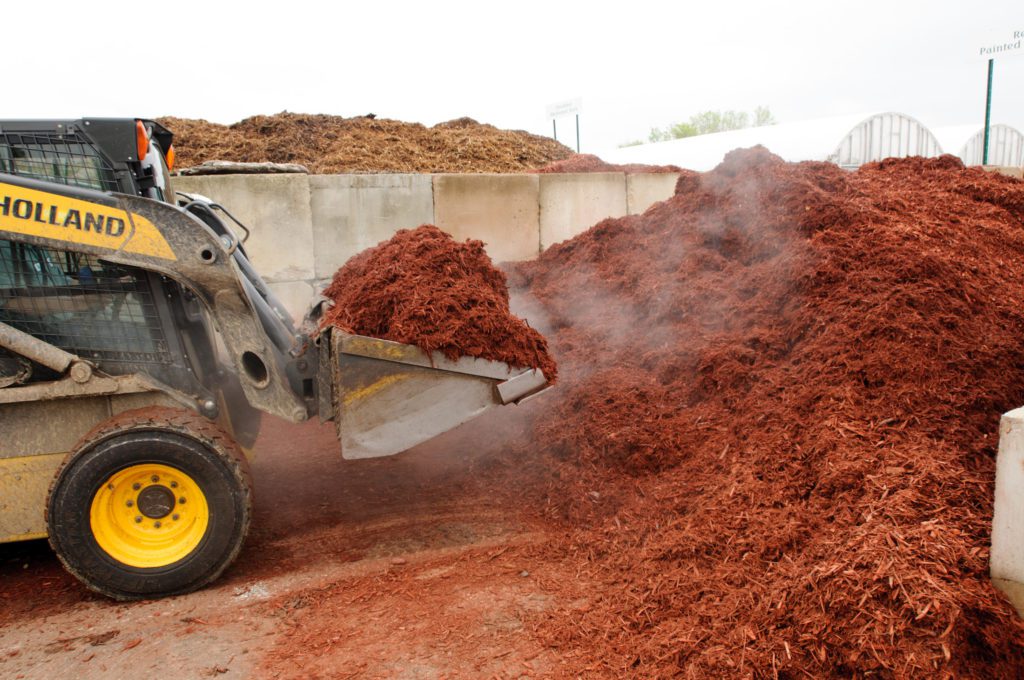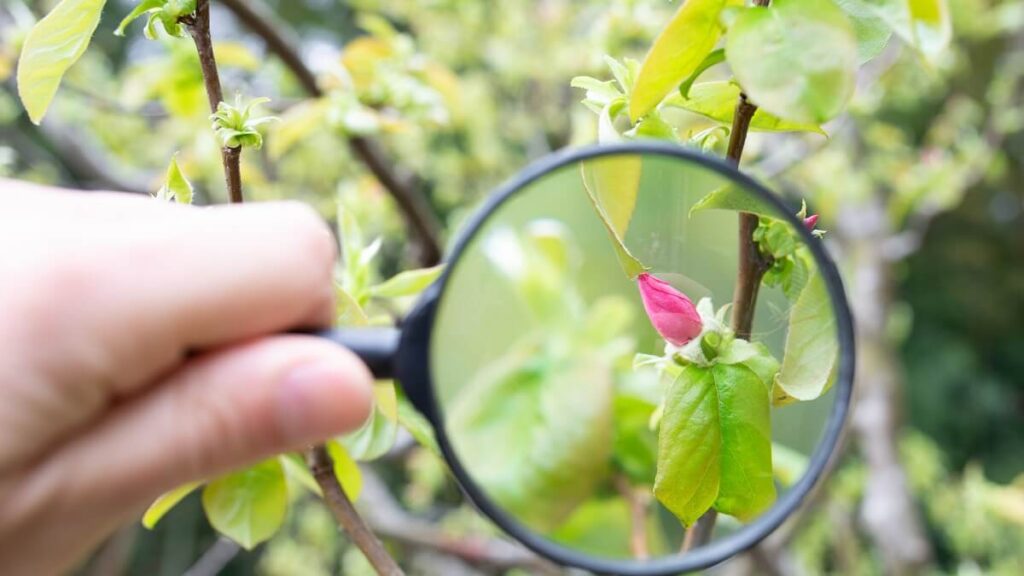There comes a day every September when it seems like everyone in the world suddenly has Mum’s for sale. From the grocery store, to the garden center, to the kid down the street. As Rochester’s source of premium plants for over 50 years, we can tell you that not all Mums are created equal. In this guide, we’ll cover what makes a good mum, where to find them, and how to best care for them.
What are mums?
Mums (aka Chrysanthemums) are a diverse group of flowering plants native to east Asia. They have also been heavily bred within the industry to offer nearly endless colors and sizes. They are known in the US, and particularly Northern states like Minnesota, as a reliable pop of fall color when many other plants have stopped producing blooms. With the right selection and care, mums will reliably bloom up to (sometimes well past) the first frost.

How to Choose a Healthy Mum
As alluded to in the previous paragraph, success with mums starts with selecting the right plant. An unfortunate side effect of the popularity of these plants is that a lot of retailers have jumped on the trend to turn a quick buck. You will often see mums at your local grocery or hardware stores. And while these mums look colorful and beautiful, the reality is that they are often near the end of their blooming lifecycle. These plants are typically trucked in from other parts of the country and grown to look their best while sitting on the sales rack. After a few days on your porch, their blooms start to wilt and fade. And within a week, the plant belongs in the compost bin.
To ensure long-lasting mums, be sure to purchase locally grown plants from a trusted garden center. This ensures the plant is at home in your climate. A plant shipped to Minnesota from California might experience quite a shock on the first 40-degree night.
Additionally, choose a plant that has dense foliage with plenty of unopened buds. Less knowledgeable retailers often stock the most colorful plants. Afterall, they look beautiful and catch the customer’s eye. But a plethora of unopened blooms is a good sign that the plant has a lot of life left in it. For example, we grow our mums in cycles so that we have a consistent supply of ready-to-bloom plants in stock throughout the entire fall season. So rather than taking a single shipment and trying to sell those same plants for weeks on end, we consistently display fresh inventory.
Maximize Blooms with Proper Care
Repotting – Mums make great container plants. They can be planted by themselves, or combined with other seasonal plants, such as decorative grasses or flowering kale can really showcase their colors. In either case, your new mum will appreciate being repotted. Mums take a long time to grow. And by the time you bring it home, it has almost certainly outgrown its nursery pot. Giving your mums some fresh soil and a little extra room to stretch their legs will keep them happy well into the fall.
Sunlight – Mums love sun. Choose a location that gets 6 hours or more of sun. And keep in mind, shadows have grown longer this time of year. So what was a sunny spot during the summer months may get considerably less sun in September and October.
Water – With all that sunlight and those eye-popping blooms, mums need plenty of water. Water deeply every 2 days. This is especially important if the weather is abnormally dry or hot. Always keep the soil evenly moist and do not let the plant wilt. It will likely recover with a deep watering, but future blooms will be less vibrant and won’t last as long.
Deadheading – Like most blooming plants, deadheading can extend blooming considerably. Pinch off any spent blooms and discard.
Protect from Frost – It’s not uncommon to see frost as early as September in some parts of Minnesota. Mums can handle fairly cold nighttime temps but protecting them from a proper frost will extend their bloom length. Simply cover them with a light fabric, or bring potted mums indoors, to prevent frost damage.
Most mums are said to bloom for about 4-8 weeks. By following the guidelines above, you should be getting that or more. If you have any questions or concerns, the experts at Sargent’s are always standing by to help! Happy Planting!







